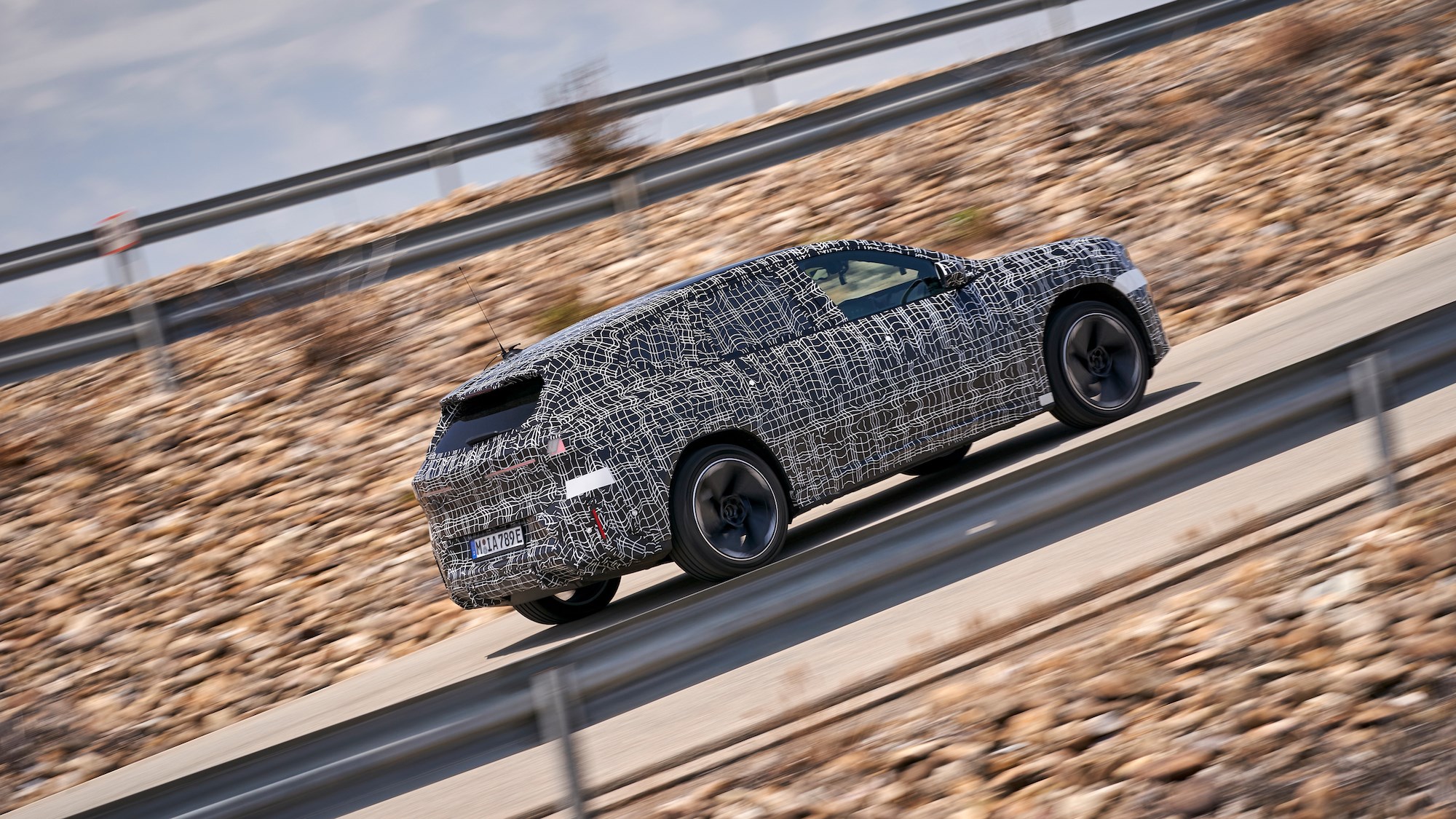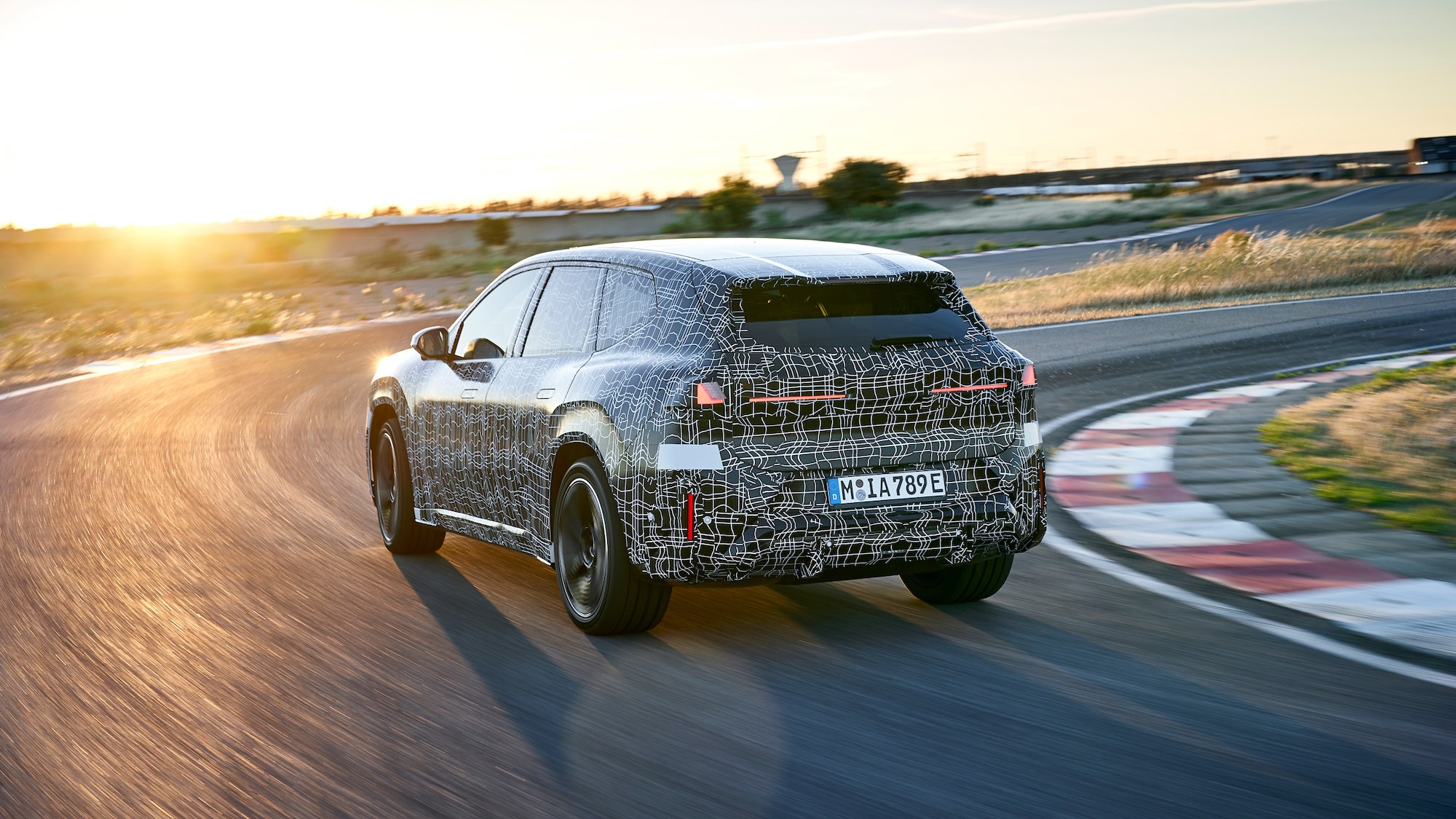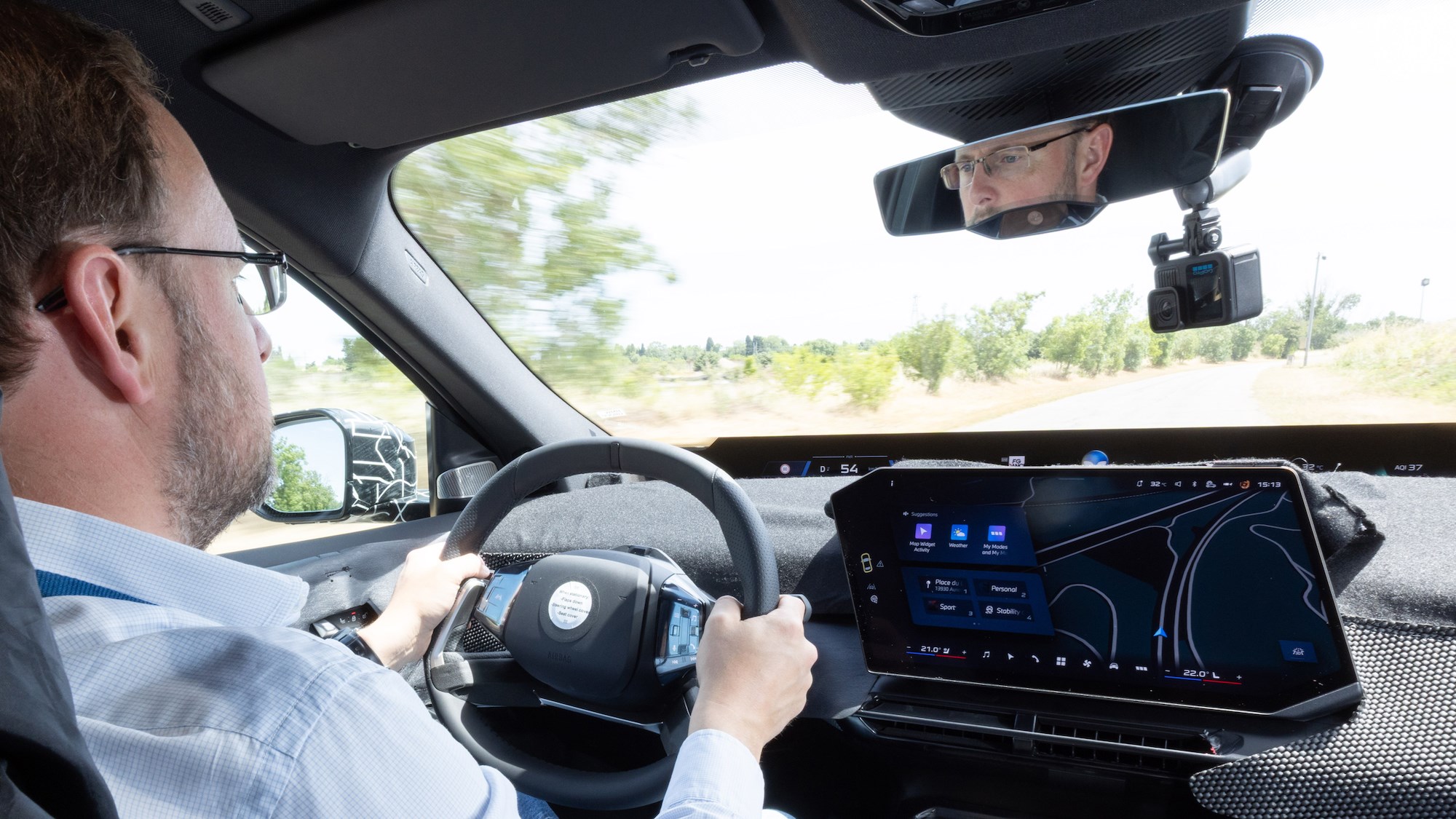► We drive a prototype of BMW’s brave new iX3
► ‘Neue Klasse’ electric SUV is a clean-sheet project
► Arrives in the UK in 2026
BMW proudly proclaims that the all-new, electric iX3 is a software-defined vehicle, the sort of innovative, clean-break engineering and design exercise that will forge a glorious new future for the company. Normally, this is a signal to crank out an obituary, especially with a brand like BMW.
But having driven a prototype version, we can reassure you that all is well in Munich. In fact, it’s looking healthier than ever, especially as the iX3 and the Neue Klasse engineering will form the basis for a whole host of future electric BMWs, including the next 3-Series.
As such, this is a huge deal for the Bavarians. Have they launched a more significant car in the last 20 years? Arguably not.
At a glance
Pros: Great body control, innovative interior, charging speed, range
Cons: Slight firmness to the suspension, unknown price at this early stage, not much else
What’s new?
Absolutely everything. BMW says this is its sixth generation of electric car (can you name them? Mini E, 1 Series Coupe Active E, i3, some PHEVs and finally the more recent BMW i5, iX etc family) and signals a brave new world of clean-sheet, electric-first architecture. It’s called Neue Klasse because BMW feels like it’s the sort of significant step on that the first Neue Klasse represented in 1961, only this time it’s more about the holistic vision of the car’s systems rather than the 1960s transformational redefinition of what BMW stood for.

The significant item is the Heart of Joy, which, despite sounding candy crushingly sweet, is actually a hugely important computer control that allows the car to operate so much more efficiently and with all the systems in coordination with one another.
The heart is one of four ‘super brains’ in the car controlling the dynamics, the infotainment, the advanced driver assistance and the basic functions such as air con. These mean that BMW can do away with the normal CAN-BUS wiring system, reducing the time it takes for the systems to talk to each other. Processing power is 10 times faster.
It’s allowed BMW to look at every single element of the car and optimise it, in theory creating a car that functions efficiently across all the parts. A bit like Dave Brailsford’s percentage gain, there isn’t one single revolutionary element, but small improvements everywhere add up to a greater overall effect.
Inside, the car runs something called Panoramic Vision, which is essentially one single linear screen from pillar to pillar. Sounds bonkers, isn’t in reality – read on for more detail on it. There’s also a new operating system – OS10.
What are the specs?
As it’s a prototype, detailed specs are thin on the ground at the moment – more will be revealed in September.
What we do know is that it runs a bi-motor, all-wheel drive set-up (a rear-wheel drive model will come further down the line) that’s been designed and built in-house by BMW. It has 800V architecture and is capable of charging at 400kW, should the charger be capable. Range is claimed at nearly 500 miles.
The battery is a cylindrical set-up, rather than the previous gen’s prismatic arrangement, and the 12 modules have been ditched for effectively one single, large module in a cell-to-pack arrangement, like BYD’s Blade. Net effect? It’s more energy dense, by 20 per cent, and more adaptable, while the cooling is also better. It’s also more of a structural part so helps the torsional rigidity. A silicone carbide inverter sits on top.
What’s it like to drive?
Seriously impressive. A few things stood out on our prototype drive.

The brakes. Not only is the pedal feel really impressive for an electric car and firm under foot, but the way it uses the regen is very clever. BMW thinks that 98 per cent of braking will be done by regen in the iX3 and, as a result, it’s managed to engineer an extremely smooth stop point. Honestly, as you coast into a set of traffic lights, you get no head toss as you hit zero mph – it gives the car a remarkably sophisticated feeling and is transformative to how smooth it makes the driving experience.
You can select one pedal driving by configuring the drive modes or dragging the gear selector into B mode, but I’m not a fan and preferred it with natural braking, especially when it’s this smooth. Rolls-Royce must surely be interested in this tech.
The steering is precise and, in Sport mode, has a reasonable amount of feel. It’s possible to get the car’s nose to tuck into the apex during fast cornering, partly because the steering is good but also because a lift on the throttle encourages the car to brake an inside wheel, bringing the chassis into line. It’s no Ford Fiesta ST, but it’s more reactive than most electric SUVs.
Despite all the tech fanfare, the car runs fairly normal steel springs and passive dampers. But don’t be fooled, as the way these control the mass is impressive. We hit a series of speed humps through one French town and the car remained completely unflustered, even when it was tackling them at 30mph. The front and rear absorbed the impact with zero fuss and there was no secondary rebound – the iX3 simply settled down immediately after each lump.
The same goes for when you hit a bump with just one wheel, as there was no energy transfer over to the other side. We mostly drove on smooth French roads but there was one section where it was a bit more like a bumpy UK road and here you could feel the iX3 is riding on reasonably stiff springs as the nose started to patter across the bumps. It wasn’t uncomfortable, but it wasn’t quite as super refined as when it had bigger, single impacts.
One particularly brilliant bit is the way that BMW has approached the various advanced driver systems. In the iX3, BMW has finally managed to crack these so that they’re less annoying but still do their job.
Take Lane Keep Assist. If you drift out of your lane, the system will correct you. But if you’re concentrating (there’s a camera in the rear-view mirror to monitor your eyes and how focused you are) and actively steer into the next lane, even without indicating, it’ll only give a slight nudge to let you know you’ve crossed the line.

Finally, if you glance into your side mirror and then move, there’s no resistance at all as the car knows you’ve checked you can safely move lane. Finally, a system that works with you.
Level two autonomous driving (hands off, if your eyes are on the road) is also available and can even work in urban environments, but it’s in motorway traffic jams that I’d find it most useful. Here, it can bring you to a stop with all the other traffic but then nudge forward according to how all the other cars and lorries move.
It’s also capable of changing lanes at speed and moving seamlessly with other cars, but I still find that level of autonomy unnerving.
What’s it like inside?
The cars were covered in camouflage so it’s tricky to discern build quality or what it looks like, but the new Panoramic Vision seems to work well.
This stretches from A-pillar to A-pillar, resting at the bottom of the windscreen, and I must admit to feeling a bit sceptical beforehand: do I really need another bit of screen tech in my car? But unlike the passenger screens you get on cars like the Mercedes EQS and Porsche Cayenne, which feel a bit redundant, this is actually useful and fully customisable. Plus, because the focal length is further away, it’s easy for your eyes to glance down and see it. Is the traditional dash dead? It’s not the hyperbolic thought you might imagine.
Dead ahead, you can see speed, battery SoC and remaining range. Across the other six tiles that spread across the rest of the display, you can configure them to your heart’s desire and everyone in the car can see them. Tired of your child always asking are we nearly there yet? There’s an ETA tile for the little darling. There’s also a BMW AI assist character, infotainment info, weather and more besides.
In addition, there’s a head-up display and it’s surprising how often your eyes flit between the two, without it being a conscious decision. I thought one or the other would feel superfluous, but neither does. Plus, the HUD can display a bit more nav info as it’s a portrait shape.
There’s a big touchscreen next to the steering wheel that’s angled towards the driver and BMW has cleaned up all the apps within it. It’s now got a more hierarchical format and a couple of shortcut buttons right next to the steering wheel, so it’s easier to turn off the speed limit warning.

Rear legroom is the same as the larger BMW X5 – in other words impressive – while boot space is on a par with the regular X3.
Verdict
The biggest compliment I can pay the iX3 is that it feels entirely normal. You come into the car expecting this whizz-bang firework moment of extraordinary talent or wary that it’ll all feel a bit like driving a computer, but instead are greeted by a car of both extraordinary and ordinary competence.
In reinventing the wheel, BMW has basically only made another wheel but this is one that feels like it should see them right for the next decade. We don’t know the price yet and it could be hideously expensive, but from an engineering point of view, it feels spot on. It was a huge risk doing this but from our early impression, the strategy of many eggs and a single basket seems to have paid off.